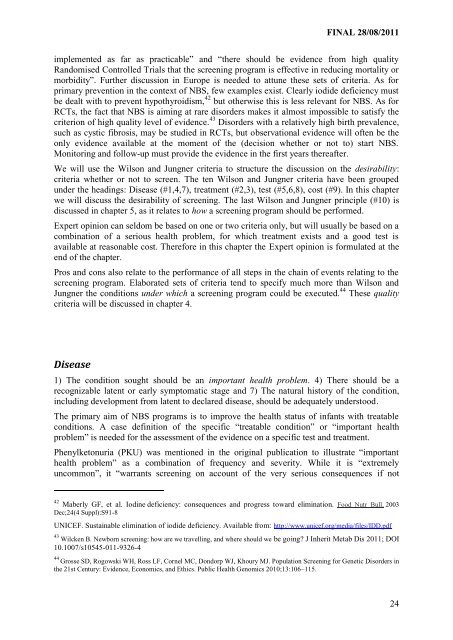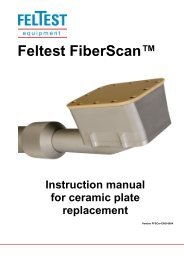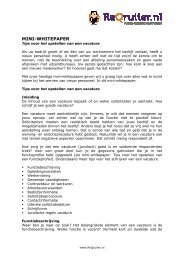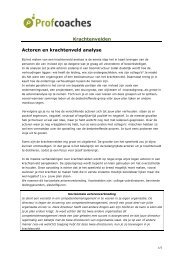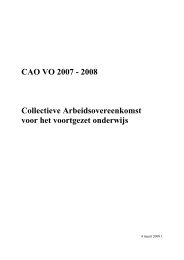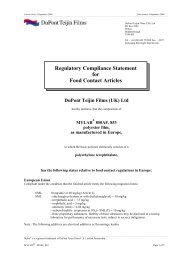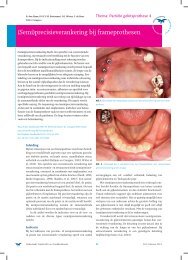Newborn screening in Europe Expert Opinion document
Newborn screening in Europe Expert Opinion document
Newborn screening in Europe Expert Opinion document
You also want an ePaper? Increase the reach of your titles
YUMPU automatically turns print PDFs into web optimized ePapers that Google loves.
FINAL 28/08/2011implemented as far as practicable” and “there should be evidence from high qualityRandomised Controlled Trials that the <strong>screen<strong>in</strong>g</strong> program is effective <strong>in</strong> reduc<strong>in</strong>g mortality ormorbidity”. Further discussion <strong>in</strong> <strong>Europe</strong> is needed to attune these sets of criteria. As forprimary prevention <strong>in</strong> the context of NBS, few examples exist. Clearly iodide deficiency mustbe dealt with to prevent hypothyroidism, 42 but otherwise this is less relevant for NBS. As forRCTs, the fact that NBS is aim<strong>in</strong>g at rare disorders makes it almost impossible to satisfy thecriterion of high quality level of evidence. 43 Disorders with a relatively high birth prevalence,such as cystic fibrosis, may be studied <strong>in</strong> RCTs, but observational evidence will often be theonly evidence available at the moment of the (decision whether or not to) start NBS.Monitor<strong>in</strong>g and follow-up must provide the evidence <strong>in</strong> the first years thereafter.We will use the Wilson and Jungner criteria to structure the discussion on the desirability:criteria whether or not to screen. The ten Wilson and Jungner criteria have been groupedunder the head<strong>in</strong>gs: Disease (#1,4,7), treatment (#2,3), test (#5,6,8), cost (#9). In this chapterwe will discuss the desirability of <strong>screen<strong>in</strong>g</strong>. The last Wilson and Jungner pr<strong>in</strong>ciple (#10) isdiscussed <strong>in</strong> chapter 5, as it relates to how a <strong>screen<strong>in</strong>g</strong> program should be performed.<strong>Expert</strong> op<strong>in</strong>ion can seldom be based on one or two criteria only, but will usually be based on acomb<strong>in</strong>ation of a serious health problem, for which treatment exists and a good test isavailable at reasonable cost. Therefore <strong>in</strong> this chapter the <strong>Expert</strong> op<strong>in</strong>ion is formulated at theend of the chapter.Pros and cons also relate to the performance of all steps <strong>in</strong> the cha<strong>in</strong> of events relat<strong>in</strong>g to the<strong>screen<strong>in</strong>g</strong> program. Elaborated sets of criteria tend to specify much more than Wilson andJungner the conditions under which a <strong>screen<strong>in</strong>g</strong> program could be executed. 44 These qualitycriteria will be discussed <strong>in</strong> chapter 4.Disease1) The condition sought should be an important health problem. 4) There should be arecognizable latent or early symptomatic stage and 7) The natural history of the condition,<strong>in</strong>clud<strong>in</strong>g development from latent to declared disease, should be adequately understood.The primary aim of NBS programs is to improve the health status of <strong>in</strong>fants with treatableconditions. A case def<strong>in</strong>ition of the specific “treatable condition” or “important healthproblem” is needed for the assessment of the evidence on a specific test and treatment.Phenylketonuria (PKU) was mentioned <strong>in</strong> the orig<strong>in</strong>al publication to illustrate “importanthealth problem” as a comb<strong>in</strong>ation of frequency and severity. While it is “extremelyuncommon”, it “warrants <strong>screen<strong>in</strong>g</strong> on account of the very serious consequences if not42 Maberly GF, et al. Iod<strong>in</strong>e deficiency: consequences and progress toward elim<strong>in</strong>ation. Food Nutr Bull. 2003Dec;24(4 Suppl):S91-8UNICEF. Susta<strong>in</strong>able elim<strong>in</strong>ation of iodide deficiency. Available from: http://www.unicef.org/media/files/IDD.pdf43 Wilcken B. <strong>Newborn</strong> <strong>screen<strong>in</strong>g</strong>: how are we travell<strong>in</strong>g, and where should we be go<strong>in</strong>g? J Inherit Metab Dis 2011; DOI10.1007/s10545-011-9326-444Grosse SD, Rogowski WH, Ross LF, Cornel MC, Dondorp WJ, Khoury MJ. Population Screen<strong>in</strong>g for Genetic Disorders <strong>in</strong>the 21st Century: Evidence, Economics, and Ethics. Public Health Genomics 2010;13:106–115.24


